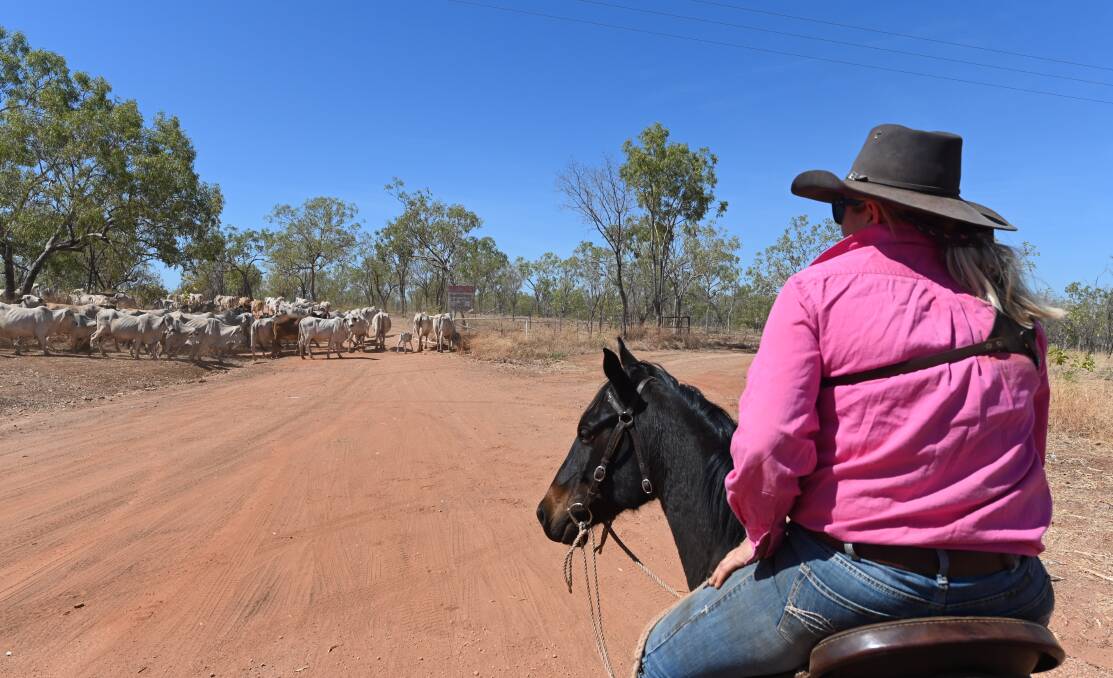The road to breaking down leadership barriers for women in agriculture

This is branded content.
A mere 30 years ago, Australian women were not able to list their legal status as 'farmer'.
Despite actively working on or for a farm, women were officially defined as unproductive 'silent partners', 'domestics', 'helpmates' or 'farmers' wives'.
In 1994 this all changed, and with legal recognition came the first of a slew of improvements for women in the agriculture industry.
Nowadays, the focus is on breaking down the barriers that prevent women from holding leadership positions in agriculture.
While many women hold business postgraduate degrees or other educational achievements that relate to agriculture, the gender diversity early pioneers strived for was still not present.
The program shifting the dial for women
In 2018, it was identified that just 2.3 per cent of CEOs in agriculture were women, and they made up only 18 per cent of senior managers.
The Workplace Gender Equality Agency recognised the overall pay gap between men and women in the agriculture industry was sitting at 21.3 per cent.
In response, the National Farmers Federation launched its Diversity in Agricultural Leadership program. The program aims to support women in agriculture to elevate their leadership via several methods including providing mentorship, increasing networking opportunities, and promoting opportunities to build industry partnerships.
The program is supported by 35 leading agricultural organisations including the Department of Agriculture, Water and the Environment, AgriFutures Australia, AGForce and Cotton Australia, who all made public pledges to make meaningful changes towards gender diversity.
One of the ultimate goals of the program was to double the number of women in agriculture leadership ranks by 2030 and to date, since its inception six years ago, there have been promising signs.
NFF President Fiona Simson has seen a "transformational change" with both more women in leadership positions and more women pursuing a career in agriculture in general.
In a 2022-23 Workplace Gender Equality Agency report, the gender pay gap for all managers was at 11.7 per cent which showed improvement on the 2018 reported figure of the overall pay gap.
Finally, the results from the 2023-24 Women's Budget Statement shows 60 per cent of agriculture and environmental studies graduates are women.
Women continue to lead the way in fostering education and training within the sector, and are instrumental in creating opportunity for others in the industry.
New opportunities
Technology has greatly shaped the agriculture industry throughout time.
From the humble plough to the global positioning system (GPS), technology continues to enhance farming practices and create more efficient ways to grow and harvest crops.
In particular, the rise of Artificial Intelligence (AI) in agriculture over the past few years can also provide those in the industry with real-time crop insights to identify needs such as irrigation, fertilisation or pesticide treatment, help to increase food production and minimise resource usage.
Alongside this is the need for new, sophisticated farm machinery and software to work alongside AI technologies to help optimise input use, generate labour savings and increase the speed of decision-making for maximum output.
This rise of new and ever-evolving technologies is providing even more opportunities for women in the field of agriculture.
What was once a male-dominated industry is now growing significantly in scope and the creation of new and exciting jobs means more opportunity than ever for women to enter the field.
Change-makers beyond the workplace
While women bring a fresh perspective, innovative ideas, a keen understanding of social, economic and environmental sustainability and a natural aptitude for multi-tasking to the agricultural industry, their reach extends well beyond the work.
For women living on farmland, they are shown to also play a pivotal role in strengthening the rural communities they live in. They are often prominent figures who continuously contribute to community development, local education and even local leadership.
Women are also strong advocates for mental health.
Historically the stigma surrounding mental health, particularly for men, has prevented many industries from taking strong steps forward in ensuring adequate access to resources that can assist people with poor mental health.
In contrast to this, many women in the sector are becoming strong advocates for mental health by raising awareness and providing support within their communities.
Looking towards the future
Women are and will continue to play a pivotal role in the agriculture sector.
Despite significant leaps forward over the past 30 years, there is still plenty to be done to achieve the gender equality desired.
In order to encourage women to consider careers in agriculture, it is important to continue to provide them with the education, training and mentorship opportunities to keep the momentum going and generate even more career pathways.
It is important to remember that diversity within agriculture is not just about achieving equality - the benefits are far-reaching and allow the industry to harness the full range of skills and perspectives needed to address growing change and challenges within the sector.


